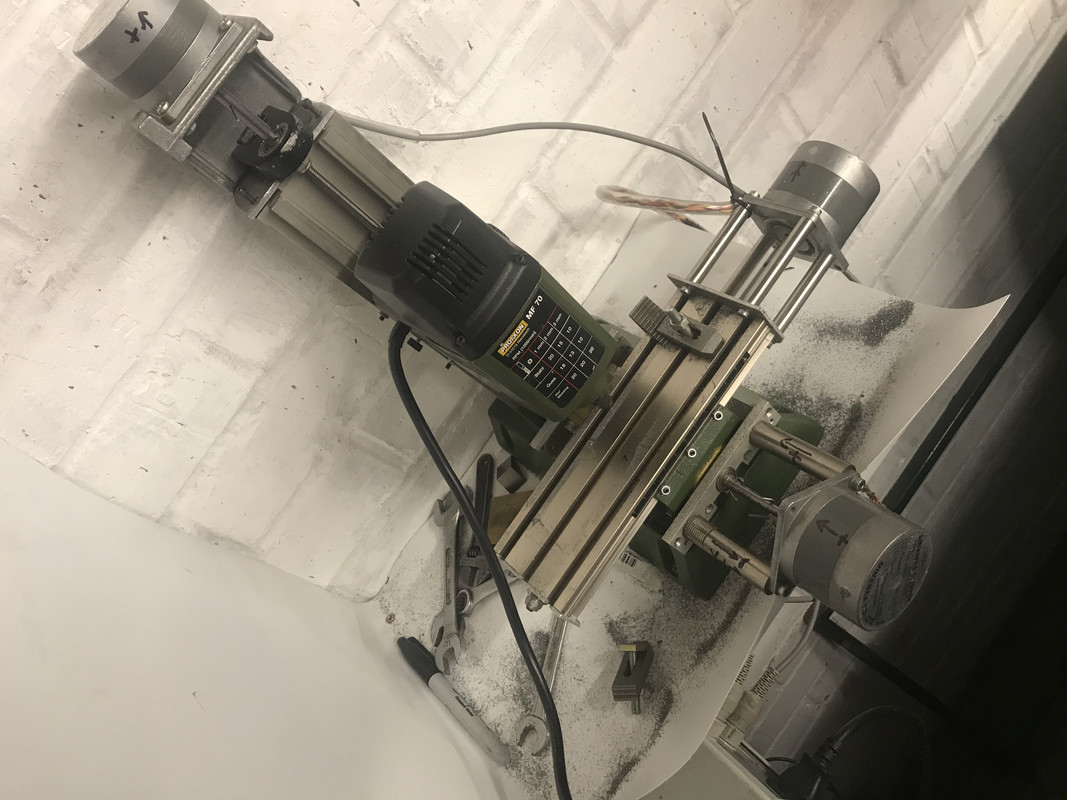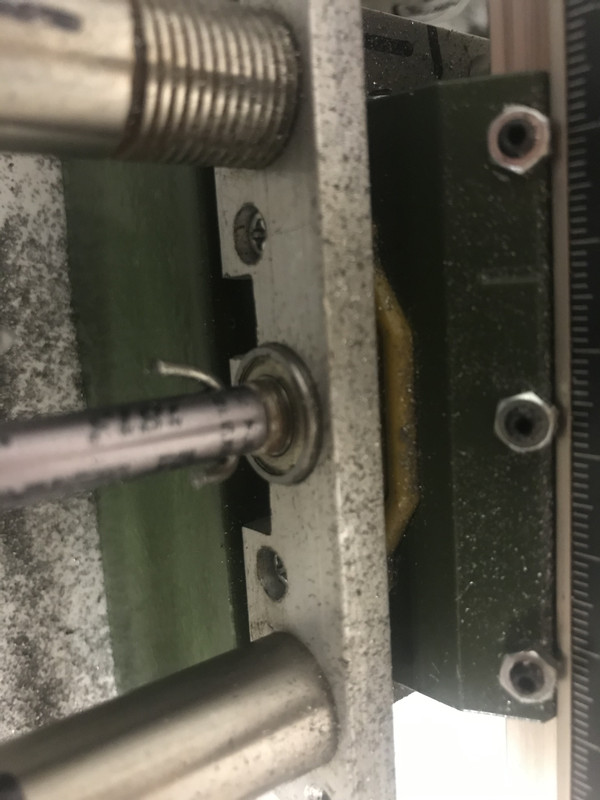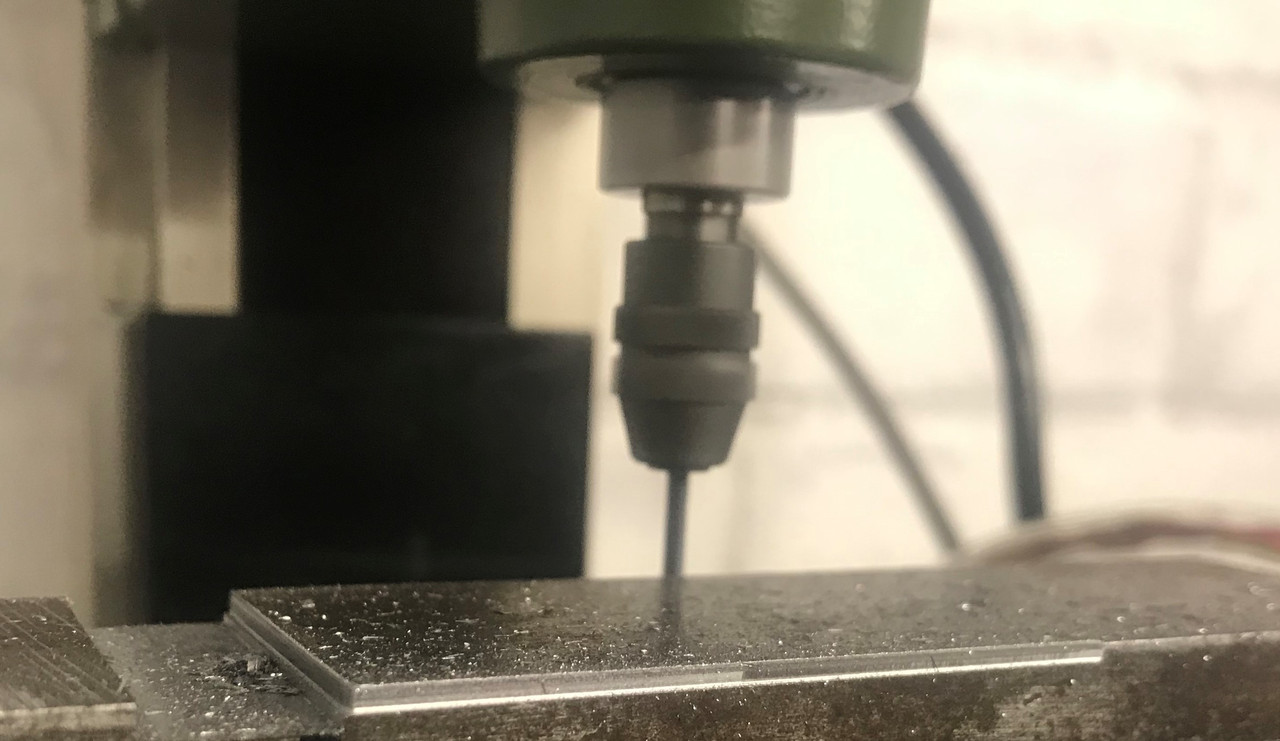Sad news, another 2mm endmill has been sacrificed to the cause of getting my CNC to work.
I used Jason's suggested toolpath – although I did re-generate it first as I moved the work coordinates.
However the basics were as he suggested: 0.2mm engagement, much greater DoC.
It all started promisingly:

And it made a couple of the passes all round to the back side before I was called to eat:

During the meal I was keeping a ear out, and when it all went silent I returned, mid meal(!) to discover an ex-endmill 

So I paused the machine, and went and finished my steak and had a beer.
Seem the most productive thing to do at that point…
On the plus side the swarf looks more 'swarfy' than last time:

I put the part under the microscope, this is where it snapped from the side:

You can see the not quite left the metal cut that was in progress.
From the top there is no obvious extra width of cut:

I managed to find the end of the endmill from where it had been thrown behind the lathe.
It shows a single tooth has more wear that the other 2, and one of the other 2 appears to be poorly formed in the first place, or possibly chipped – its very hard to tell.

For comparison here is the last unused 2mm, not snapped one:

The edges on that however look distinctly rubbish compared to the 1mm Kyocera mill

After a serious dose of thinking about it I measured the runout on the tool – using the as yet unsnapped 2mm which has a long shank – ideal for an indicator to run on. approx 0.076 mm (a little over 3 thou). With a toolpath supposed to take a side cut of 0.2mm this is quite a significant change in cut load per rev I think.
I also checked with a 3mm tool, in case it was the collet – same result, so I guess that's the natural spindle runout.
I think I need less runout than that to successfully use tiny mills – certainly if I put in a 1mm end mill and the runout is nearly 10% diameter that sounds bad.
Should I formulate a new spindle plan at this point?
Dave
old mart.



























